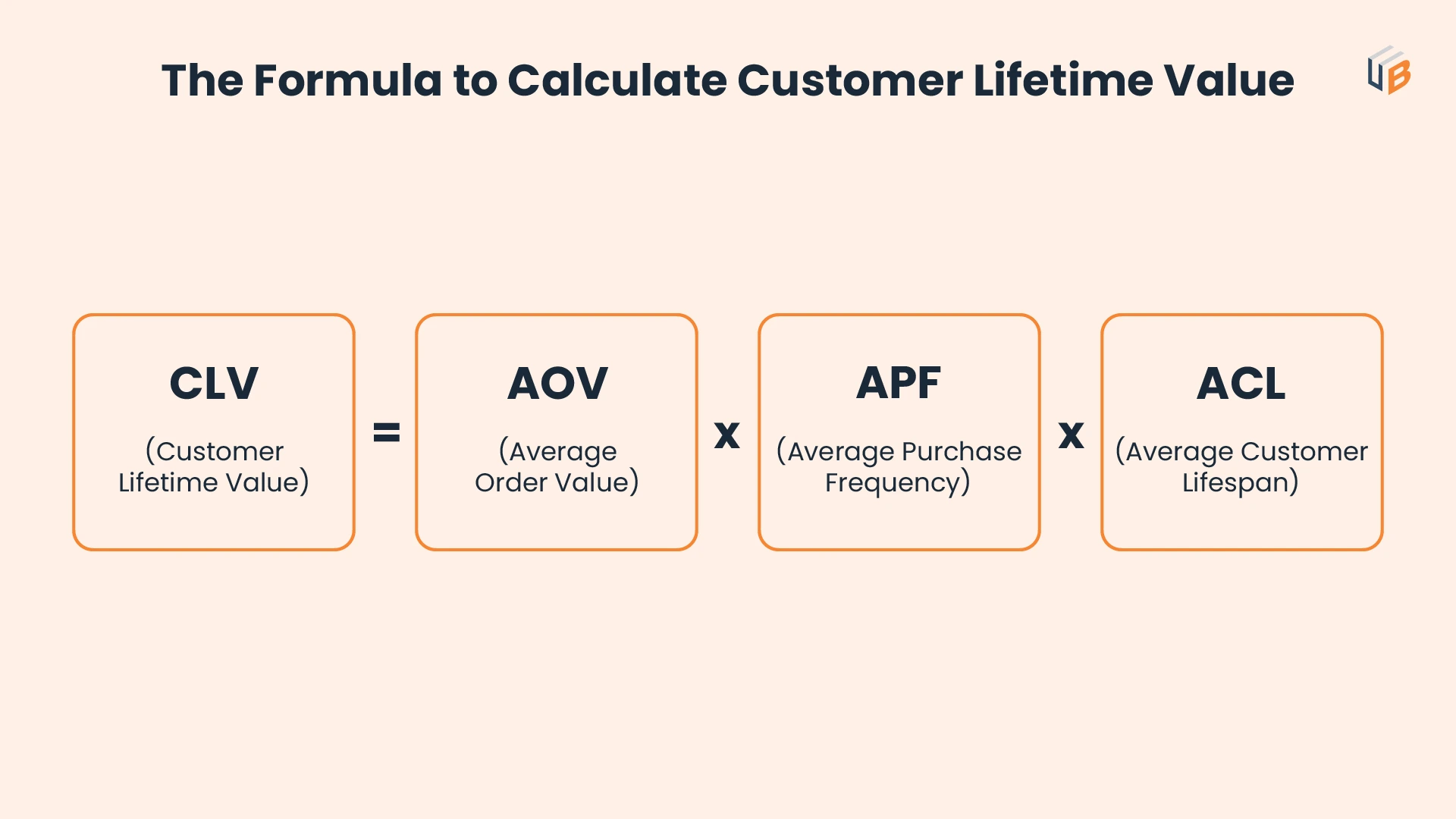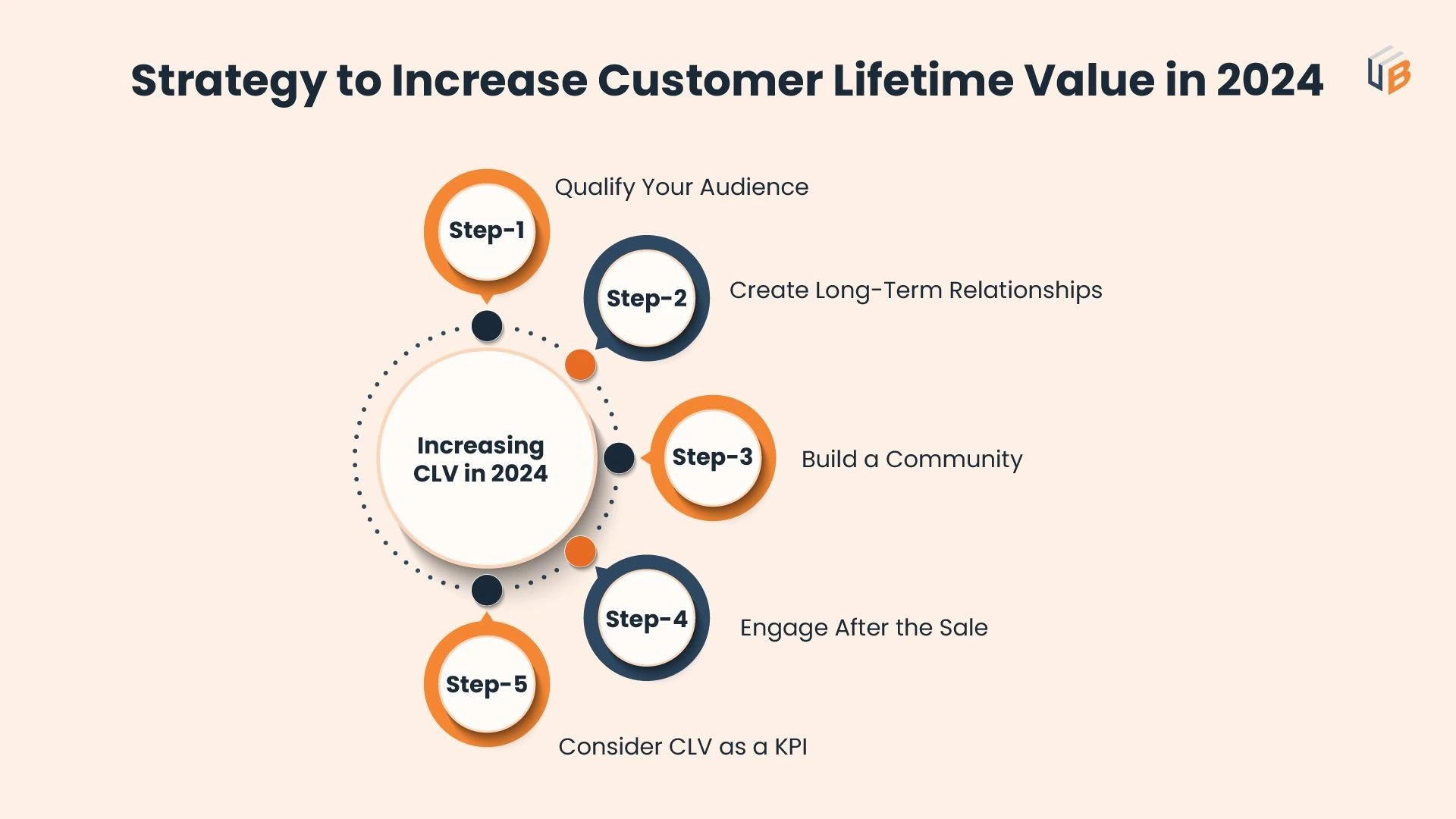
Every effort a marketer or salesperson makes in an organization is to get more customers. But all these efforts will go to waste if the business is not able to hold and retain these clients.
Every company wants to make their clients happy and satisfied with their products and services. But, they forget to make efforts to retain them.
With 2024 almost here, organizations should start making strategies to increase consumer loyalty. Consumer loyalty is crucial due to the customer’s lifetime value (CLV).
CLV is the revenue generated by a consumer throughout their customer journey. Statistics suggest that 20% of the customers generate 80% of the company’s revenue. So most of your business is coming from the clients you are retaining.
Before making a strategy to enhance go-to-market customer lifetime value for 2024, it is ideal to understand how to measure CLV.
How to Calculate Customer Lifetime Value?
To calculate accurate CLV you need to find out a few other values such as:
1. Average Order Value (AOV)
To calculate AOV, divide a business’s total revenue over a period of time by the total number of orders placed by consumers in a given period. Let’s say the revenue generated by a business in 6 months is $200,000 and the number of orders placed by the consumers is 40. So the AOV of 6 months is $5000.
2. Average Purchase Frequency Rate (APF)
To get the value of APF, you will divide the total number of purchases by the number of unique customers who made a buy during a period of time. For instance, if your company sold 1000 products to 200 consumers, your APF will be 5. This means on average for every purchase a consumer buys 5 products.
3. Average Customer Lifespan (ACL)
You can measure the ACL of your enterprise by averaging the number of years a client continues purchasing from your enterprise. Let’s say a client buys your services thrice a year for three years, then your ACL is 3.
4. Customer Lifetime Value (CLV)
There are many ways to calculate Customer Lifetime Value. One way to do this is by multiplying the average order value by the average purchase frequency and then by the average customer lifespan.

For the go-to-market, you will also need to understand the Customer Acquisition Cost (CAC). CAC determines how much it costs to acquire a customer. So to measure CAC you need to multiply customer lifetime value with your profit margin.
The formula, in short, is CAC = CLV x profit margin
5-Step Strategy to Increase Go-To-Market Customer Lifetime Value

1. Qualify Your Audience Wisely
To increase your CLV in 2024, the first step is to recognize prospects who will not just become your clients but long-term clients. As we are targeting this specific audience, they should be represented as the ideal customer profile.
Qualifying your audience more effectively starts with evaluating the customer lifetime value along with the average customer lifespan and customer value. If your numbers are lacking value in these three areas, you will need to focus on increasing that part. Moreover, you will need to focus on aspects that can turn your ICP into a tool that will increase your CLV. These aspects are as follows:
- Evident difference between high and low-lifespan customers.
- Identifiable traits of low-lifespan consumers that you can avoid in the future.
- Identifiable traits of high-lifespan consumers that you can emphasize in targeting future clients.
- Similarity, if any, between the clients that provide the most or least value to your enterprise.
2. Create Long-Term Relationship With Your Prospects
It is important to maintain a relationship with your prospects and consumers from the beginning. The reason why it is so crucial is the cost of acquiring new customers is 5 to 25 times more than retaining the existing ones.
Moreover, without a strong relationship, upselling and cross-selling will not be effective. All the efforts you put in will push your prospects away rather than bring them closer to buying your product.
On the contrary, when you prompt a solid relationship with your prospects, understand their needs, attempt upsell and cross-sell and make the final sale. This will be perceived as a great customer experience and your prospects will turn into customers.
Boosting relationships with your prospects or customers is an intricate process and every step you take is with precaution. So make sure you provide value and take all important information you can get.
3. Build a Community
If you want to avoid becoming a faceless brand in your go-to-market in 2024, you have to bring your prospects and customers to your business world and assist them throughout their customer journey to work with other users to receive the most from your product or service.
When we think or talk about community, it is often people in a close-knit group with a common vision and goals. The same goes for businesses, if you can make a community of like-minded people and give them space to engage, you will see increased loyalty and customer lifetime value.
You can achieve it by forming a community social board, staying proactive on social media and other omnichannel marketing techniques. Once they enter a community you have formed, they will stay in touch with your product or services and any other campaign you make to keep sales active.
4. Engage Even After the Sale
A common mistake businesses make is once a sale is complete they completely neglect a client. This makes them think that all of the attention was just to make them buy your product. Your clients want to be reminded that you are dedicated toward them and that you want them to succeed.
Nurturing continuous relationships with clients is a big part of marketing and you can achieve it by letting them know that you care. A few questions you can ask your clients post-sale are:
- Did our product or service solve the issue or inconvenience you were facing before buying our product?
- Are there any weaknesses or challenges you are facing while using our product?
- How satisfied are you with our overall customer service and team?
- How likely are you to recommend our product or services to friends or family?
5. Consider CLV as a Key Performance Indicator
As you are already measuring CLV, consider it as a vital KPI. It is an important metric because it helps to predict profitability, create a customer acquisition budget, and set expectations for future growth. Another reason for considering CLV a KPI is you may be less likely to engage with prospects who don’t fit your ideal buyer persona as they are missing the long-term value.
It also gives marketers the power to decline short-term revenue that increases the cost of acquisition in the future. A high CLV represents businesses can anticipate their cashflows for a certain period of time. So they have the opportunity to take calculated risks and make decisions that increase profitability.
Get the Most of Customer Lifetime Value in 2024
Enterprises that are calculating and analyzing their CLV in their go-to-market will stay one step ahead of the competition. You can also use it as a KPI to track the success of your top-priority objective. It may be a daunting task to make a strategy but it is ideal as it brings increased sales, better profitability, and low customer acquisition costs.
Our blog
Latest blog posts
Tool and strategies modern teams need to help their companies grow.

B2B companies must generate leads that are ready to buy their products in order to me...

In the absence of a constant flow of leads, sales teams can't meet their targets and ...

Podcasts and webinars are powerful tools that marketers can use to reach new audience...


